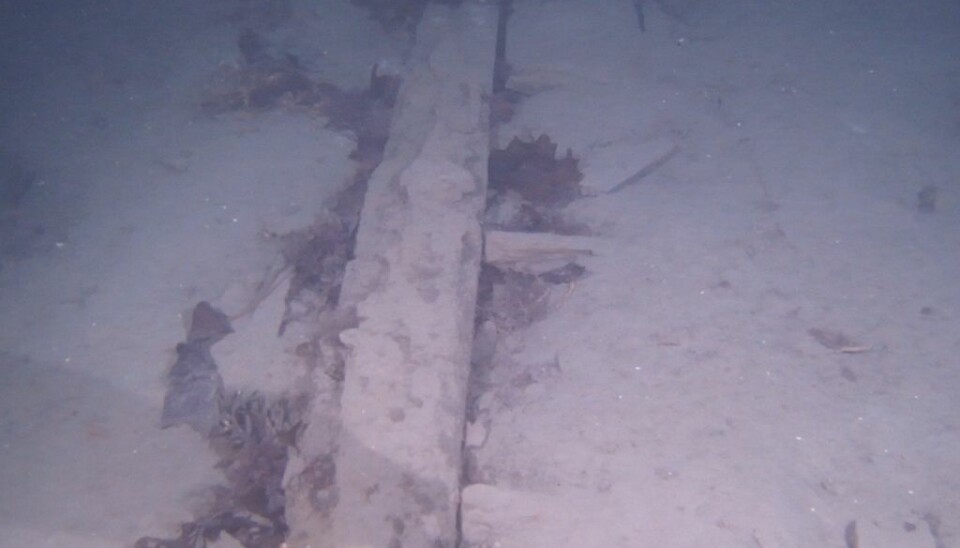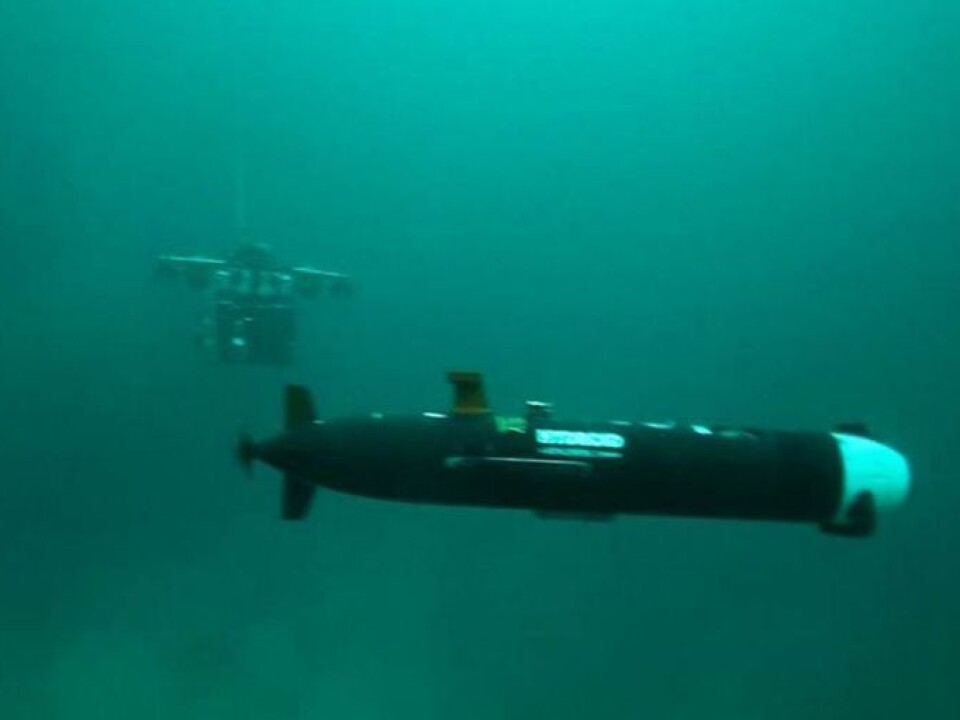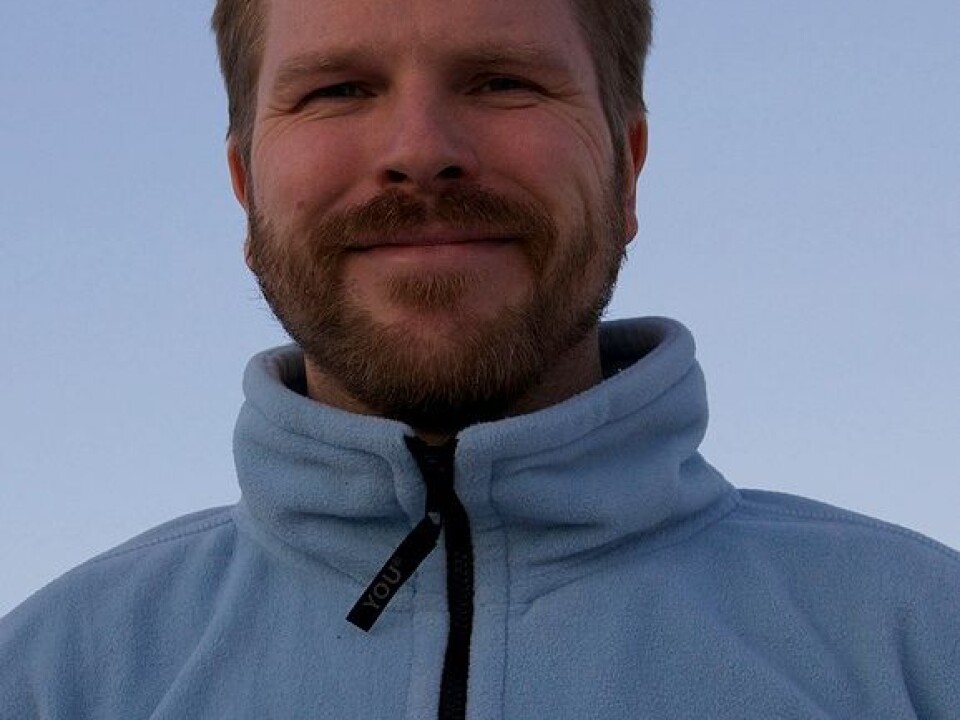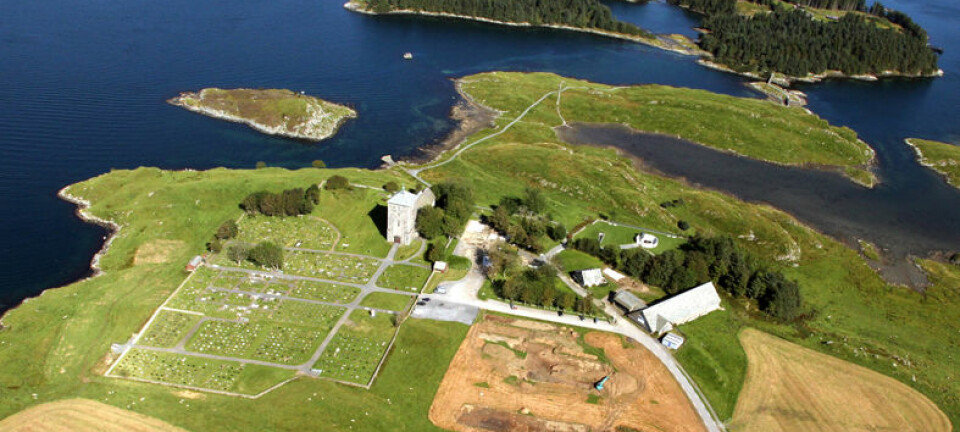
Locating shipwrecks along the Norwegian coast
Robotic subs are honing in on uncharted sea floor, searching for wrecks.
Denne artikkelen er over ti år gammel og kan inneholde utdatert informasjon.
The Norwegian coast is littered with shipwrecks. The seabed is strewn with undiscovered remains after centuries of maritime activities.
Found with the boats are objects that are little prone to decay – bottles, metal items, cannon and anchors.
Closer to shore are layers of refuse that tell the story of earlier eating habits and trade. Settlements from the Stone Age, which were then on land, can also be found beneath the waves.
Marine archaeologists used to dive down to wrecks, but the rugged seabed along the Norwegian coast is uninviting. The water is deep and cold.

Diving has its limitations. Regulations limit dives to 30 metres and marine archaeologists can only stay under at such depths for half an hour. Then they have to decompress for hours before the next dive.
Robot submersibles are taking over.
“It’s real progress. Now we can reach cultural relics that used to be inaccessible,” says Øyvind Ødegård, a marine archaeologist at the Museum of Natural History and Archaeology in Trondheim.
He doesn’t miss the inhospitable diving conditions. Now he works on the surface and can steer robots that go much deeper than divers.
Five unknown shipwrecks

New technology was taken out on a boat in December for testing. The Norwegian University of Science and Technology (NTNU)’s Applied Underwater Robotic Laboratory (AUR-lab) voyaged right outside Trondheim harbour. The objective was to test some new sensors on an autonomous underwater vehicle (AUV).
The initiative is a joint effort between NTNU and the Norwegian Defence Research Establishment, which have developed the robotic vehicle together with Kongsberg Maritime.
“The plan was to cruise over a known shipwreck, assumed to be a sailing vessel from the 1600s. We would be cruising back and forth from various angles and distances, collecting as much data as we could,” explains Ødegård.
Their surprise was enormous when two other old shipwrecks turned up in the same area, as well as three sunken barges from recent times.
They were pressed for time to return the equipment so these five wrecks still haven’t been scrutinized. Ødegård is now interpreting what the AUV filmed.
He can see that the one of the newly found wrecks is 26 metres long and five metres wide. Only its skeletal remains protrude from the seafloor, which indicates it has been there a long time.
The wreck lies at a depth of 80 metres, too deep for human divers. This is where robot subs open a whole new world of opportunities.
Robots go deeper and longer
“At the AUR-lab we work with these terrific new developments in robot technology,” says Ødegård.
Two types of submersible robots are used to explore parts of the sea that used to be inaccessible to scientists.
One is a remotely operated vehicle, a ROV, which has a video camera and is connected by cables to a surface vessel. Scientists operate it from their boat and steer the robot with the help of video screen. The ROV can register data in high resolution, but the capacity of its camera and lighting fixtures narrow down its functional working distance from subsea objects to 5-10 metres.
“It takes a long time to investigate areas with ROVs. That’s why we also use autonomous vehicles that can scan the seafloor across a large area and return to us with data,” explains Ødegård.
The marine archaeologists’ AUV, on the other hand, has a new type of sensor that offers a resolution down to two centimetres across a sweeping field of 200 metres at either side.
“This is completely unimaginable compared to the technology we’ve used previously. Now we see a beer can 200 metres away,” says Ødegård.
The AUV finds out where preferably more interesting items are located, and then the ROV is brought into position to investigate the wrecks with a video camera and an arm that can dig and pick up objects.
A coast of uncharted wrecks
Scientists know there are quantities of wrecks off the Norwegian coast. All shipwrecks more than 100 years old are automatically protected by law as heritage sites.
Such wrecks can range from Stone Age dugout canoes to the less significant recent find near Trondheim − modern cargo barges.
The average depth of the world’s oceans is 4,000 metres. The safety limit for scuba divers of 30 metres excludes most of the spots where wrecks can be found. That makes human management of most cultural heritage sites nearly impossible.
“We have an enormous thirst for knowledge. How fast does deterioration occur, what can we do to slow it down, what can be done at sea and what needs to be done on land? Our knowledge requisites are greater the deeper the wreck is,” explains Ødegård.
Historic sources mention shipwrecks, so archaeologists often have a fair idea of where certain wrecks lie. Maritime inquiries, insurance documents and sagas also indicate where vessels sank.
“But most wrecks are at depths we have no way of reaching with divers. They are spread across vast areas and we are completely reliant on new technology to find and chart them,” says Ødegård.
Multidisciplinary equipment
Marine archaeologists at the AUR-lab are involved in developing the equipment they need. They cooperate with biologists and technicians on production of hardware which is beneficial for other disciplines as well.
“Marine archaeologists now collaborate with marine biologists. We use the same equipment and monitors and we analyse the same data,” says Ødegård.
Shipwrecks are a natural invitation to cooperation across professional lines. They are cultural relics but they have also become part of the marine ecosystem. A more recent shipwreck can represent a source of pollution, for instance if it has much fuel aboard or a toxic cargo.
Old, broken down wooden wrecks, however, often serve as veritable nurseries and housing projects for important marine species.
Arctic dream
Currently, 99 percent of the seabed of Norwegian coastal areas is still uncharted. The new, far-reaching work methods are giving access to unexplored sub-surface territory.
“Technicians, biologists, geophysicists and archaeologists are working together now to collect data about these marine areas. The multidisciplinary approach will yield better protection and management,” says Ødegård.
His personal dream is to take the new equipment into Norway’s Arctic waters, where weather and ocean conditions have always deterred effective exploration of shipwrecks by marine archaeologists. The robotic submersibles can also work under the ice.
Biological decay is slow in the brackish waters of the Baltic. This is where archaeologists have found nearly pristine wrecks from the 1600s. Ødegård thinks this is an indication of the finds awaiting them in the Arctic.
“I think we can find similar conditions along the east coast of Svalbard. My dream is to discover an unscathed ship in the area. That would be a crowning achievement.”
With the new technology Ødegård’s Arctic dream is a step closer to realisation.
--------------------
Read the Norwegian version of this article at forskning.no
Translated by: Glenn Ostling
































